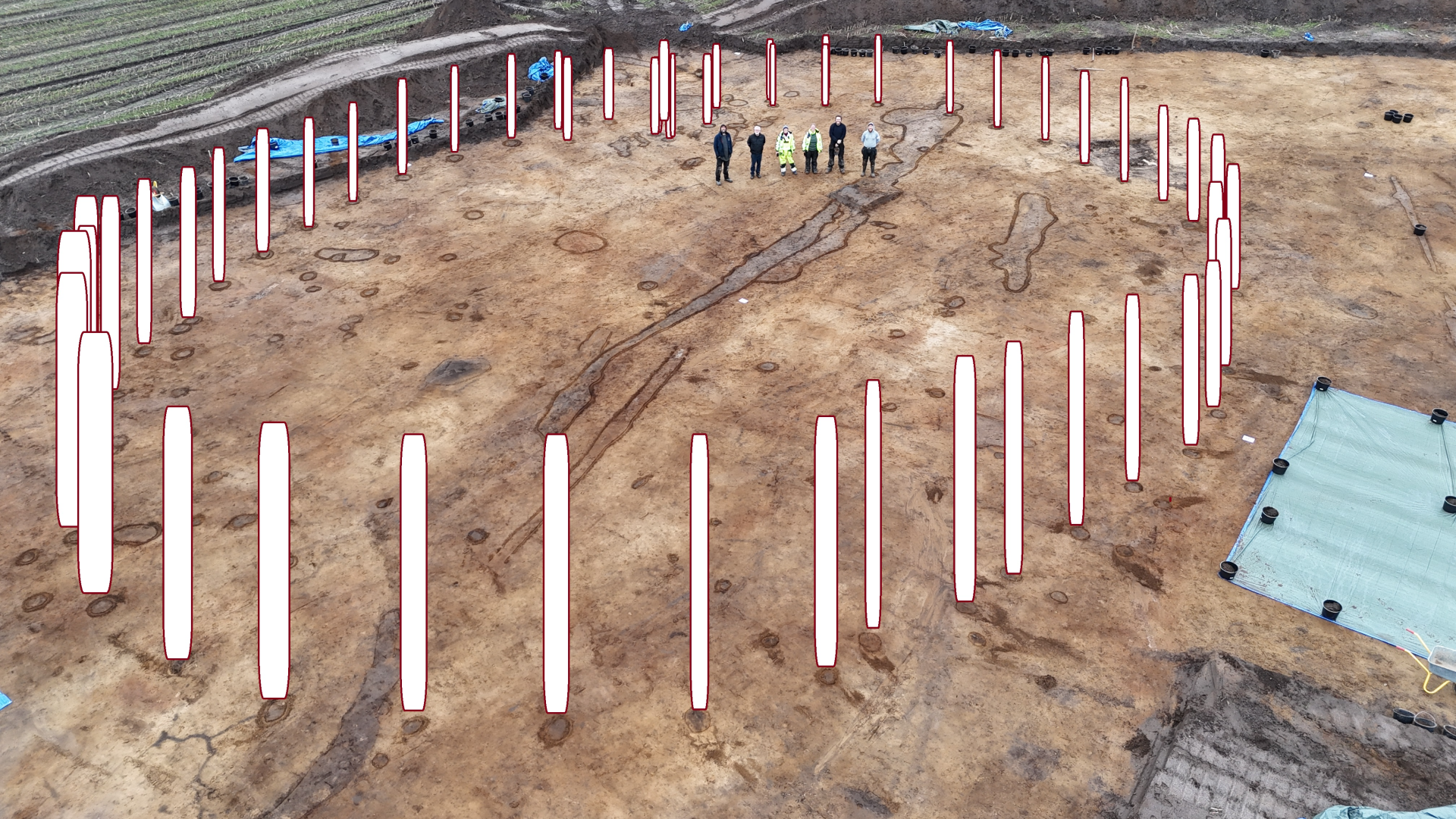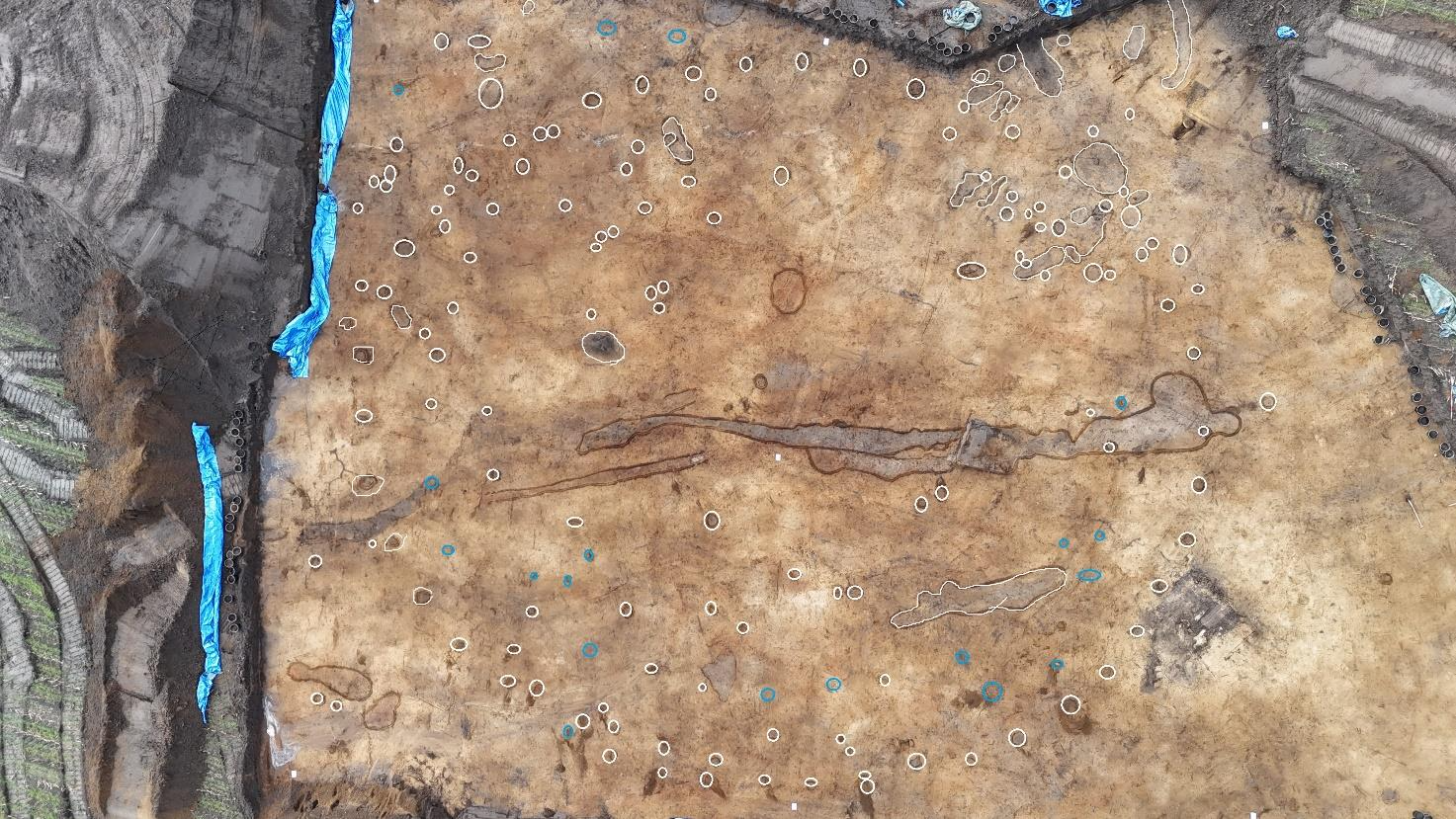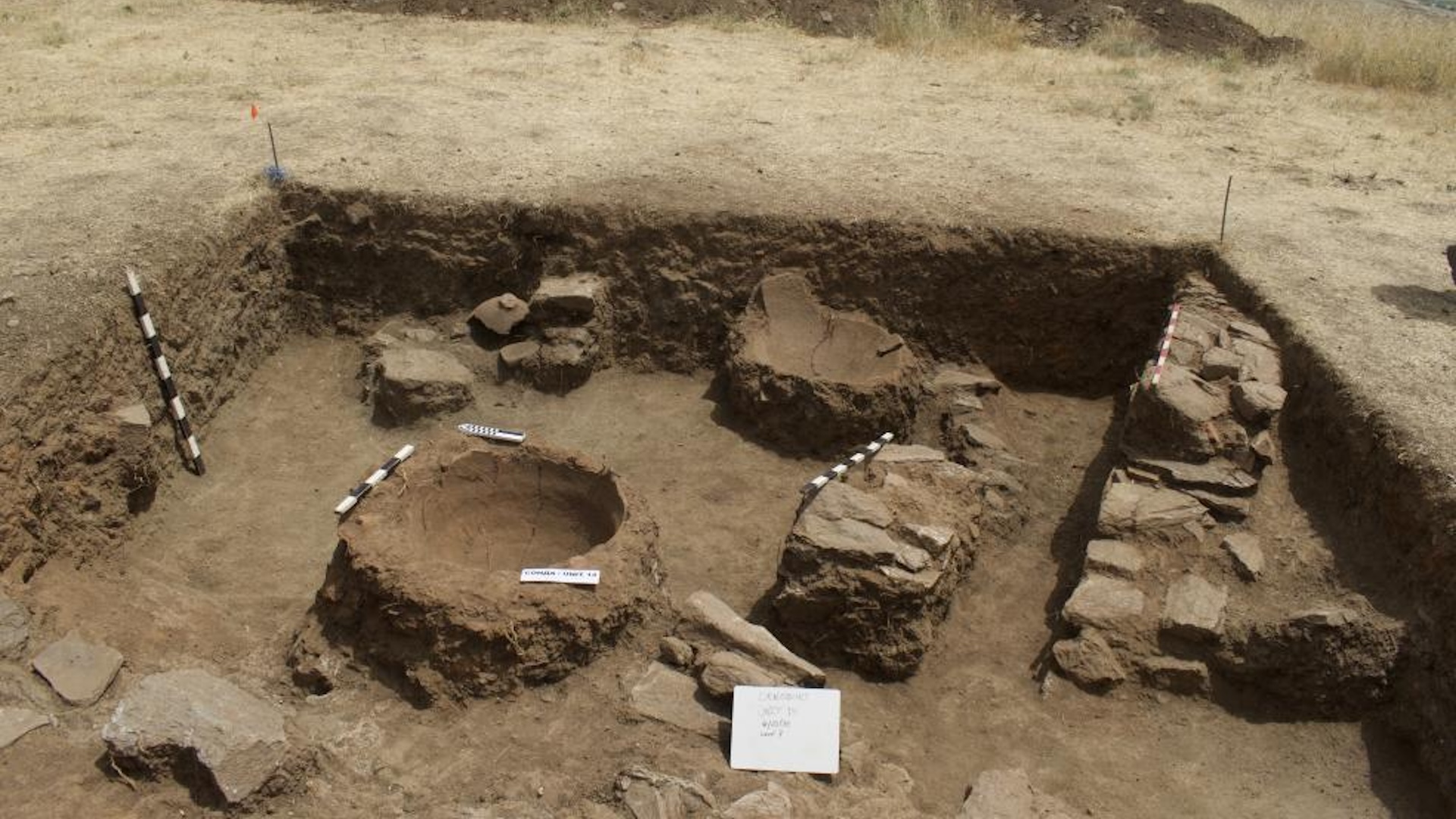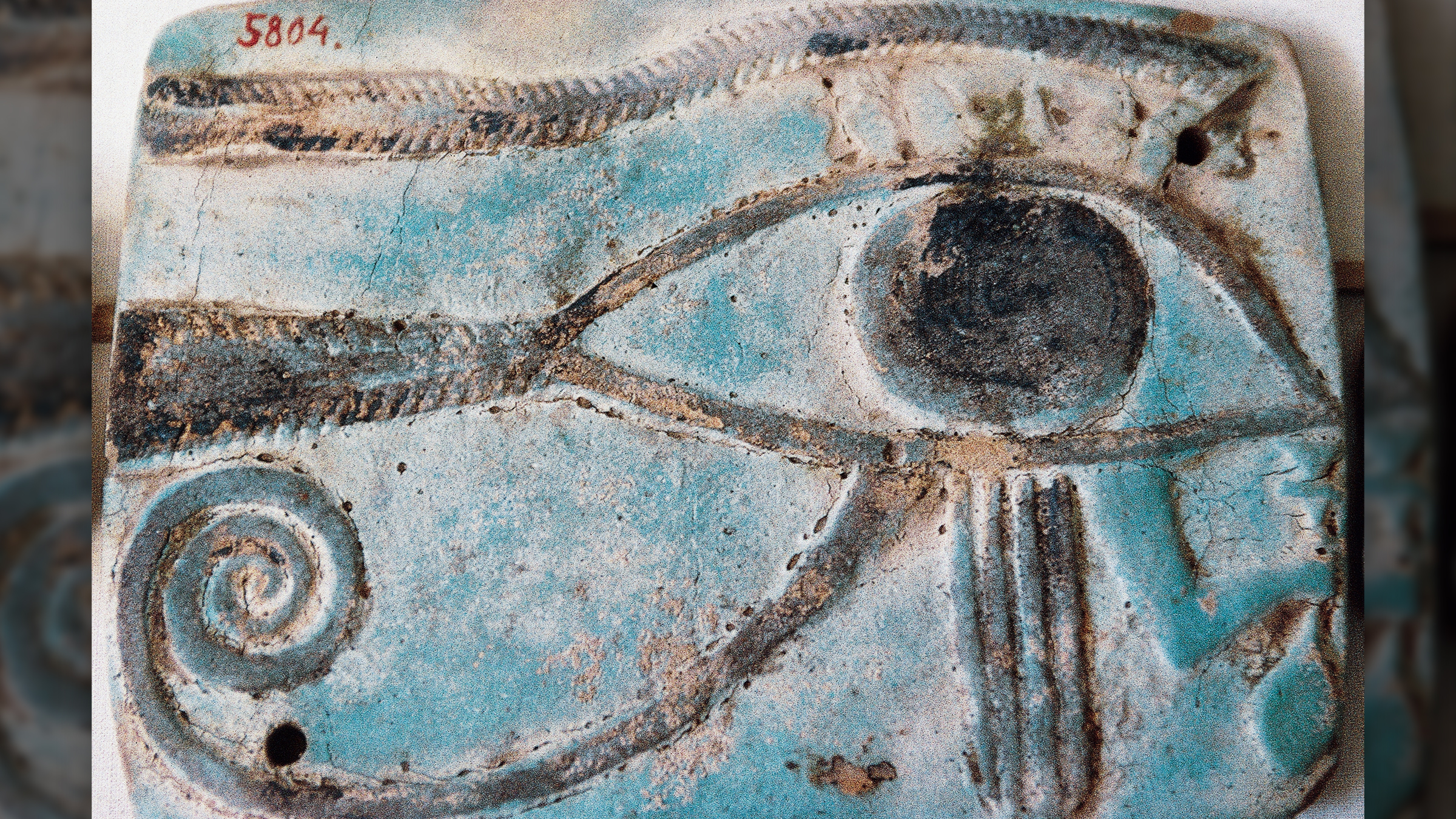'Extraordinary' timber circle discovered in Denmark is roughly the same age as Stonehenge
Archaeologists in Denmark have discovered the remains of a large timber circle that may be contemporaneous with England's Woodhenge and Stonehenge.

Archaeologists in northern Denmark have discovered the remains of a large timber circle that is thousands of years old and has parallels to England's Stonehenge. This open-air structure was likely part of a larger "ritual landscape" used by prehistoric people of the Late Neolithic (New Stone Age) and Early Bronze Age (2600 to 1600 B.C.).
"This is an extraordinary find," Sidsel Wåhlin, curator at the Vesthimmerlands Museum and excavation co-leader, said in a statement. "The timber circle provides valuable insights into the ritual practices and social structures of this internationally connected prehistoric society."
The newly uncovered circle consists of 45 postholes spaced roughly 6.5 feet (2 meters) apart, according to the statement, for a diameter of about 100 feet (30 m). Although no wood remains standing, experts guess that large, upright timbers had been placed in the small holes.
Timber circles, or wood henges, are somewhat mysterious, as no records have been left to explain what they were used for. But these henges have been found across northwestern Europe, particularly in the British Isles, where butchered animal bones and domestic waste found at some sites suggest people engaged in rituals and feasted there.
Woodhenge, located a couple of miles from Stonehenge, is perhaps the best-known timber circle. It was constructed of six concentric ovals of posts around 2500 B.C., roughly the same time as Stonehenge and, like Stonehenge, is thought to align with the summer solstice.
Related: 'Exceptionally rare' 1,500-year-old Roman helmet found in chief's burial in Denmark

"The timber circle is not only a significant archaeological discovery but also a window into the past, offering us a glimpse of the ceremonial and ritual activities of our ancestors," excavation manager Andreas Bo Nielsen said in the statement.
Sign up for the Live Science daily newsletter now
Get the world’s most fascinating discoveries delivered straight to your inbox.
Archaeological excavation of the postholes has already begun, with a goal of better understanding the construction and use of the timber circle. Vesthimmerlands Museum plans to share details of the excavation and findings later this year.
The new henge in Vesthimmerland, Denmark, has not been fully studied, but its shape implies that there were strong connections between northern Europe and England as early as the Late Neolithic period.
Stonehenge quiz: What do you know about the ancient monument?

Kristina Killgrove is a staff writer at Live Science with a focus on archaeology and paleoanthropology news. Her articles have also appeared in venues such as Forbes, Smithsonian, and Mental Floss. Killgrove holds postgraduate degrees in anthropology and classical archaeology and was formerly a university professor and researcher. She has received awards from the Society for American Archaeology and the American Anthropological Association for her science writing.
You must confirm your public display name before commenting
Please logout and then login again, you will then be prompted to enter your display name.










